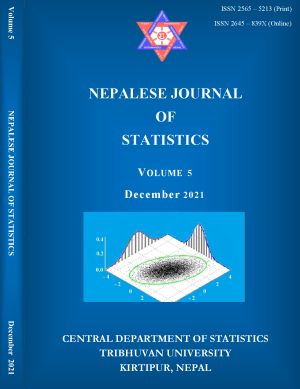A Note on Confusion between Linear and Affine Functions and the Generalized Forms of Gradient
DOI:
https://doi.org/10.3126/njs.v5i1.41225Keywords:
Affine, function, derivative, inverse informative matrix, least-squares estimate, regression coefficientAbstract
Background: Arguably the most frequently used term in science, particularly in mathematics and statistics, is linear. However, confusion arises from the various meanings of linearity instructed in different levels of mathematical courses. The definition of linearity taught in high school is less correct than the one learned in a linear algebra class. The correlation coefficient of two quantitative variables is a numerical measure of the affinity, not only linearity, of two variables. However, every statistics book loosely says it is a measure of linear relationship. This clearly show that there is some confusion between use of the terms the linear function and affine function.
Objective: This article aims at clarifying the confusion between use of the terms linear function and affine function. It also provides more generalized forms of the gradient in different branches of mathematics and show their equivalency.
Materials and Methods: We have used the pure analytical deductive methods to proof the statements.
Results: We have clearly presented that gradient is the measure of affinity, not just linearity. It becomes a special case of the derivative in calculus, of the least-squares estimate of the regression coefficient in statistics and matrix theory. The gradient can be seen in terms of the inverse of the informative matrix in the most general setting of the linear model estimation.
Conclusion: The article has been clearly written to show the distinction between the linear and affine functions in a concise and unambiguous manner. We hope that readers will clearly see various generalizations of the gradient and article itself would be a simple exposition, enlightening, and fun to read.
Downloads
Downloads
Published
How to Cite
Issue
Section
License
© Central Department of Statistics, Tribhuvan University, Kirtipur, Kathmandu, Nepal
The author of article must sign the copyright permission or the author must assign copyright to the Central Department of Statistics, Tribhuvan University prior to publication.
All rights reserved.




